Your business’s website might include things like a home page, a page to explain your products/services, and a contact page. There could be other pages too, depending on what’s important to your brand. Though all of these pages are important to give potential customers a sense of who you are and what you do, a landing page serves a specific purpose. When designed properly, it can produce a flow of consistent leads to your business.
What is a Landing Page?
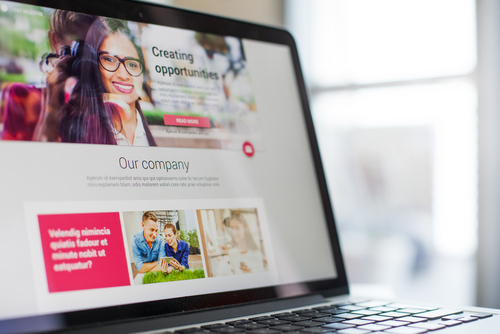
A landing page is a single-page website that directs visitors to take a specific action. The sole purpose of this page is to convert visitors to leads by offering something desirable in exchange for their contact information. Businesses create landing pages in order to get visitors to:
- Sign up for a newsletter or paid service
- Download an app, e-book, or freebie
- Register for an event or webinar
- Join a community or waitlist
- Get a free quote, trial, or demo
These pages are commonly used as a marketing tool, as most web users “land” on these pages after clicking on advertisements they see on social media or Google. Unlike your traditional website, when users arrive at your landing page they are often more interested in taking action than navigating the many pages of your website.
The Components of a Landing Page
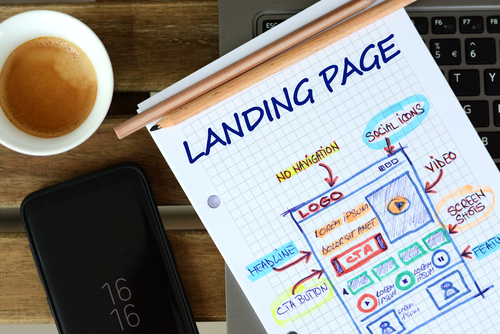
Landing pages are meant to be simple. Users do not end up on a landing page because they want to learn the intimate details about your business. Most of them arrive willing and ready to take action. The content on a landing page is centered around that specific action. The main content housed on a landing page includes:
Headline – A compelling headline helps to grab visitors’ attention and give them that final push to take action.
Images & Video – Attractive photos and videos let potential customers know about the products or services you are offering them.
Call-to-Action (CTA) – The most important part of your landing page, the call-to-action is the component where your customers will submit their information and take the action that initiates their relationship with your business.
Persuasive Content – The additional content you can use to persuade your visitors to take action include:
- Social media icons for sharing
- Customer reviews or testimonials
- Links to your business’s full website or social media profiles
- Short descriptions of products or services
- Graphics displaying your business’s accolades or partnerships
The Psychology Behind the Process
So how does a landing page turn the online consumer into your customer? There’s a psychology behind the conversion process that explains why landing pages work so well, especially when paired with pay-per-click advertising. We’ll walk you through the process:
Step 1: Google Search
A web user has a specific problem, need, or desire. In this case, they need a railing repaired, so they perform a search for what they need: railing repair.
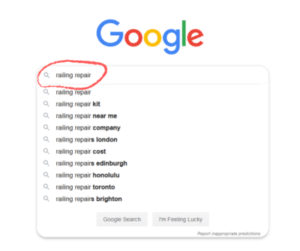
Step 2: Choose a Result
Thanks to pay-per-click advertising, a local railing repair company is listed even at the very top of the search results page. It looks like a great match for what the consumer is looking for! The customer then clicks the link.
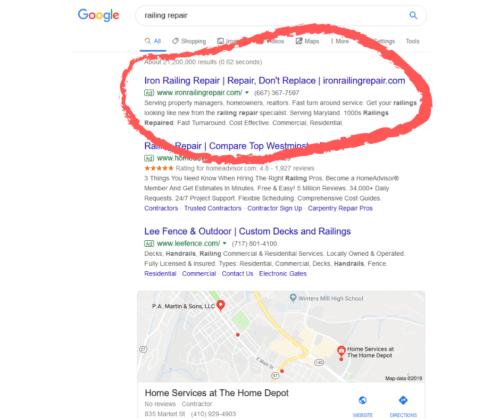
Step 3: Arrive at the Landing Page
The link brings the consumer directly to the business’s landing page. The consumer is immediately called to action at the beginning of the page with the GET A FREE ESTIMATE button.
If the consumer is in a hurry to schedule a repair, they might even bypass the submission form and use the click-to-call functionality to speak with a repair professional right away.
If they’re gathering estimates or aren’t in as much of a hurry, it might only take the persuasive heading (Unique Selling Proposition) to convince them to submit their contact information, delivering a solid lead for the business to follow up with.
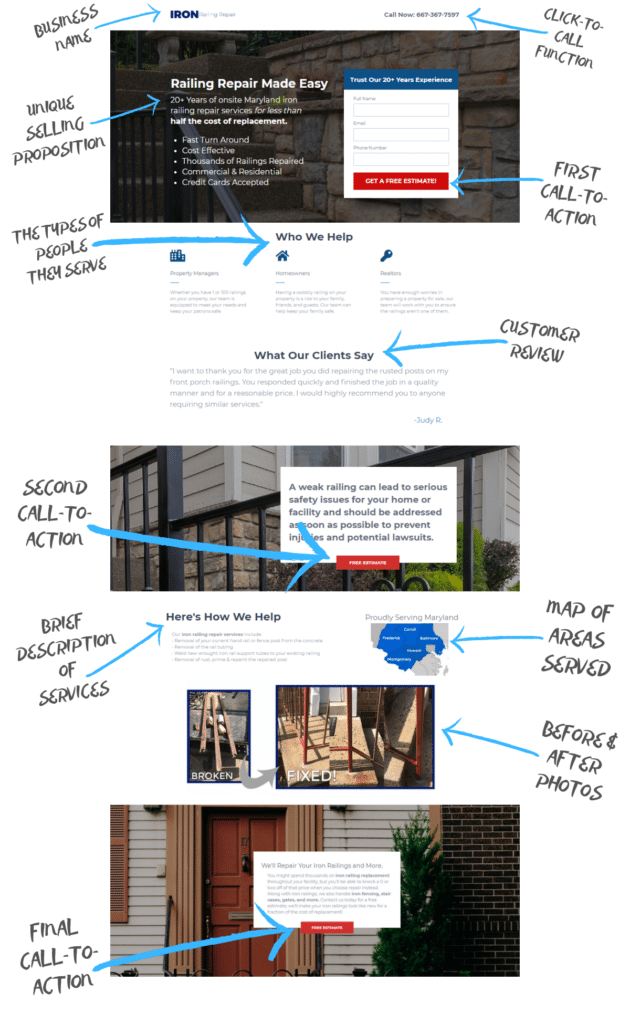
If they want to see more information on the business before becoming their customer, they can scroll the page and find out:
- The types of people they serve.
- What their customers have to say about their business and the service they provide.
- A brief description of the repair process.
- What geographical areas they serve.
- What the before-and-after photos of their repair work look like.
The additional calls-to-action placed throughout the persuasive and descriptive content allows the visitor to quickly navigate to the estimate request form at the top of the page as they scroll.
Getting Your Business the Perfect Landing Page
At Advantage Internet Marketing, we can help you create the perfect landing page to compliment your traditional website. If you need to get started with a traditional website, we can help with that too. The landing pages we create for our customers are strategically designed to serve as profitable marketing tools that generate solid leads for their businesses. Contact our team and let us create the perfect landing page for you today!
